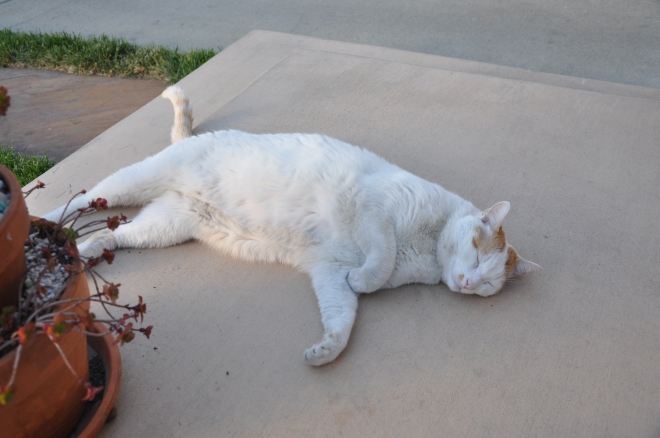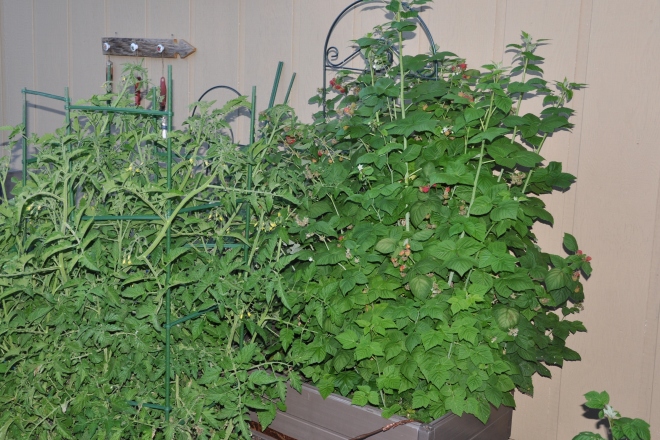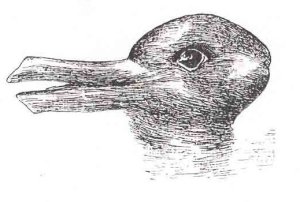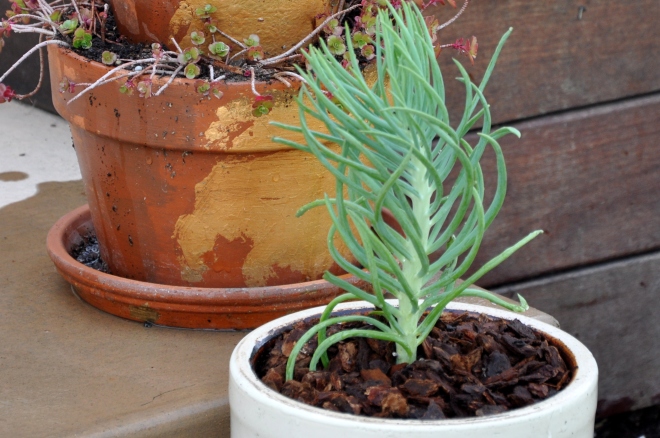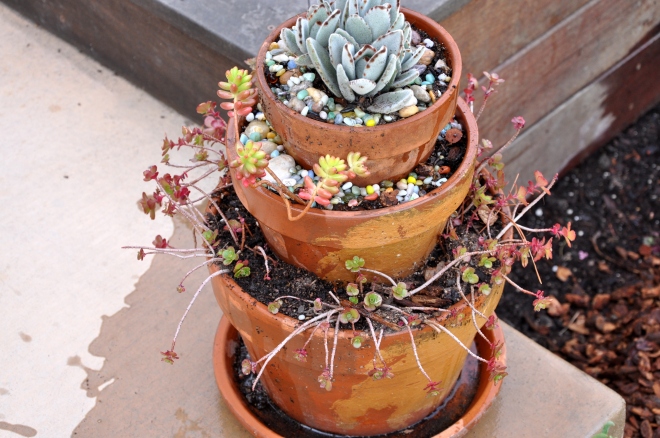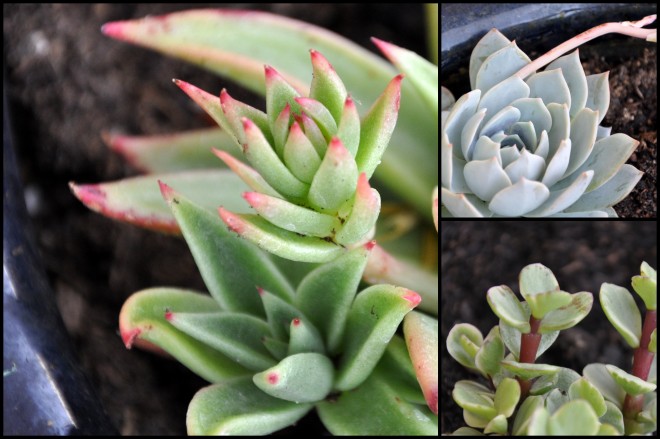First, the heat.
Our forecasted high for today is 100F (38C). It’s going to be hot again tomorrow and Friday before cooling down for the weekend. I have both the temperament and the complexion for the British Aisles, so this weather puts me out of sorts. Mouse agrees.
My lettuce looks a bit on the wilted side, but the rest of the garden crops are enjoying the summer. (Oh wait, it’s still spring…it’s hard to tell anymore). The pumpkin seedlings are up, the raspberries are flourishing and the tomatoes are yelling, ‘look ma, I’ve grown!’
Unfortunately we’re in the middle of a terrible drought. Above-average temperatures further evaporate our low reservoirs. Dry grasses increase fire risk.
Which brings me to water.
I met with Cheri Garza of San Jose Water Company for a household water audit. She really knows her business, and taught me a lot. Outdoors, she inspected the hose bibbs, our irrigation system, the irrigation schedule and the water main. She tested for leaks and watering efficiency, then measured the square footage of our lawn. She liked the sidewalk strip conversion (we removed the lawn and capped several sprinkler heads. She said a lot of water goes to waste in the strip.
Indoors, she checked faucets, showers and toilets in each bathroom, then checked the kitchen faucet, dishwasher and washing machine.
On the plus side, our indoor water usage is efficient. All the faucets, toilets and showers use 2 gallons per minute or less. I do minimal hand-washing , which is less efficient than a fully loaded dishwasher and the same for clothes washing. The down side is that it will be harder to reduce when mandatory rationing sets in.
Outdoors, however, there are many ways to improve our water efficiency. San Jose Water is offering partial rebates and we qualify for all three. They allow you one year from the date of the audit to complete the projects. Originally they rebated seventy-five cents per square foot. They’ve increased that amount through September to $2 per square foot if you replace water-thirsty lawn with approved native and drought tolerant plantings.
The second rebate offers up to $5 per sprinkler head. Our sprinklers are only four years old, but the new and improved Rainbird U-Series uses up to 30% less water.
The third rebate went into effect in January and applies to a graywater system. Water savings amounts to 17 gallons per person, per day, or on average 14,565 gallons per household per year. I need to do my research on this, but on the surface, I love it. You divert graywater from your washing machine and use it to water non-edible landscaping.
Here are a few general tips for water savings outdoors:
- Drip irrigation is the most efficient way to water landscaping.
- Water in the morning, to reduce evaporation
- In California, turn off your irrigation system completely in December until mid-March.
- Water your lawn for three to seven minutes, three to four days a week.
- Go Native! Attract birds and beneficial insects and at the same time conserve water
To save water indoors:
- Shower for ten minutes or less
- Don’t flush at night
- Run full loads of dishes and laundry
- Replace out of date toilets with 1.28 gpf
It’s a lot of information to digest, but I’m excited at the possibilities.
If you have more tips, please share them in the comments below.

